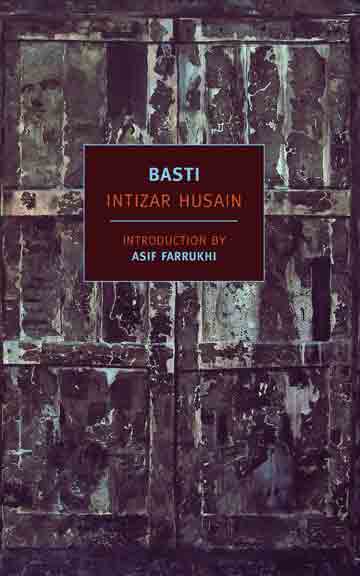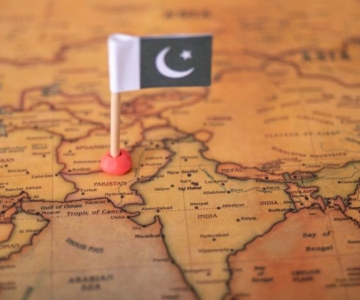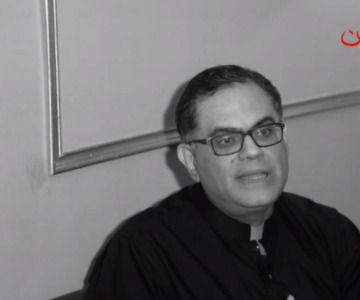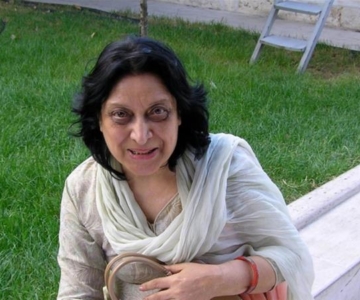THE publication of Basti’s translation is an important literary milestone. The author, Intizar Husain, is perhaps the greatest living Urdu writer and his genius rightly deserves a wider audience than just readers of Urdu or Hindi fiction. Intizar Sahib’s stories have been translated earlier and they showcased his taut, lyrical, hauntingly evocative prose to those who were not familiar with the world of Urdu. However, the novel as a genre and as a kaleidoscope of society conveys a discreet vision of the world. This is why Basti’s publication by New York Review Books is a landmark with respect to globalising the beauty and intricacy of Urdu literature.
Earlier, Qurratulain Hyder had translated her own novels (Aag ka Darya and Aakhir-i-Shab ke Hamsafar among others); her many admirers had been quick to point out that in the English translations she had been unfair, above all, to herself. The original Urdu novels are far more majestic than their translations. Except a few other novels, such as Abdullah Hussain’s Weary Generations (Udas Naslain), there is little that the world knows about Urdu literature. The Urdu short story has had a better deal in terms of translations, but the Urdu novel has largely been ignored.
Basti, at the outset, is the tale of a reminiscing Zakir, the novel’s protagonist who is a professor of history and a migrant to his new homeland from across the border. The novel primarily relates the various stages of his life.
Zakir lives in a dynamic, conflictual and contradictory world. There is no Hardyesque feeling of an individual pitted against the larger forces at work. Instead, throughout the novel, there are threads of nostalgia, displacement and ruptured continuities. The Partition of India in 1947 is the centre of the novel’s sombre, impressionistic landscape. That year turns everything topsy-turvy, and more so, it transforms the fate of the basti (settlement). Unlike other Partition literature, Basti avoids direct, graphic reportage on the psychological and physical violence inherent to Partition. The political chaos at one level is also interiorised by Zakir. There is, then, an intense feeling of alienation and emptiness that Zakir, as a migrant in a new country, feels. It should be remembered that Husain, now considered a torchbearer of progressive thought in Urdu language and literature, was never a firebrand revolutionary in the way that other luminaries in Urdu are known as. In fact, Zakir’s ambivalence towards politics and resistance is partly reflective of Intizar Sahib’s ideological moorings in the new discourse on jadeediyat or modernism.
Basti was criticised when it was first published in Urdu. Critics, often driven by ideological imperatives, considered it to be a lesser novel for its evident refusal to apportion blame or affix responsibility. However, the novel has proved to be a formidable work of art. Almost like rocks beneath (to borrow a phrase from Emily Bronte), it is a narrative that is neither noisy, nor voluminous or polemical. Its melancholy mood, layered plot and composite portrayal of human emotion ensure its timelessness and universal appeal.
Another intriguing question which has been raised is whether Zakir is an autobiographical character. Of course, the parallels are strong. Intizar Sahib spent his early youth in Bulandshehr, a town in Uttar Pradesh, and migrated to Pakistan after 1947. Not unlike Zakir’s ruminations, a large body of Intizar Sahib’s work has invoked the pangs of separation from the more familiar basti, and has consistently delved into existential issues through the lens of mythology. Intizar Sahib’s mastery over Indian mythology and its most inventive use as a literary device is a different subject, for there is much to be said about his tremendous output over the past many decades. It is somewhat tragic that only now is he getting the global recognition that he undoubtedly deserves.
To his credit, Intizar Sahib has defied the charge of living in perpetual nostalgia and glorifying it. Even in Basti, nostalgia is seldom a source of comfort or a perverse pleasure. It is like heavy air that lingers throughout, especially when Zakir is trying to find his bearings in the new city that history has presented him as a gift of existence. In Husain’s more recent works, nostalgia has taken another shape, as it turns more of a reminder and a marker of the present. Occasionally it takes the form of sleep or dreams and helps navigate the murky present. Intizar Sahib can take big and small steps into history and through his clever technique keep the past fully relevant. This is perhaps the hallmark of his literature; it blends the past with the present in a most unnoticeable and gentle manner. No wonder that Zakir of Basti is a history buff.
Sabirah is another real and metaphorical character of Basti, who remains a perpetual fascination for the protagonist. Zakir can never let go of thoughts about her, even when they are separated after 1947. The trauma of 1947 is seconded in the novel by the 1971 war, which resulted in the subcontinent’s second partition. Sabirah, though, re-emerges as a sign of renewal towards the end of the book. Yet, Zakir’s response to the 1971 war is also intriguing: sometimes I have absolutely no idea where I am, in what place. Deep down, Zakir’s fear of a permanent partition, an evergreen wound, becomes fortified with the events of 1971. Displacement, thus, turns into a permanent state of being. This is a feeling that is shared across cultures, if one thinks of the Afghan and Iranian migrants, of the Congolese and the Rwandans, and so many other people disconnected by history from their bastis. The compact canvas of the novel, as a result, becomes even more poignant. The grand nature of Basti’s tale, therefore, grows on the reader; like an anti-hero, Basti weaves an epic and also challenges it from within by underlining the grains of nothingness in our everyday lives. Basti does not have a well-defined ending, as it reinforces the melancholy mood and raises more questions about the emptiness of human existence.
Frances W. Pritchett’s translation is competent, though it struggles to address the intractability of the Urdu language. In her introduction, she mentions the issues with the text, but she seldom falters on this account. There are, though, moments when certain sentences are a wee bit dull, shorn as they are of their cultural mooring. Simple Urdu prose in itself was an innovation compared to its ornate origins and the poetics of Persian literature. Intizar Sahib’s minimalist style, if not carefully translated, could engender lifeless prose. Overall, Pritchett does an efficient job for which she must be commended.
Basti’s capable translation will likely attain a varied audience for Intizar Sahib’s exceptional writing. Asif Farrukhi’s compelling introduction adds much value to this edition as it sets the context of the novel and helps the unfamiliar reader about the significance of this book. Basti’s publication might also be a great development for many Pakistanis who have stopped reading Urdu literature in their quest for a globalised identity. An important step that now needs to be taken is ensuring that Basti turns into a vital part of English curricula across the spectrum of public and private educational institutions. Unlike historical narratives in both India and Pakistan, literature has been a great antidote to prejudice and bigotry, and a vehicle for remembrance and forgetting. This is why celebrating this important novel, once again, is an imperative feat.
Raza Rumi is a writer and the director of Jinnah Institute, Islamabad. His writings are archived at http://razarumi.com



